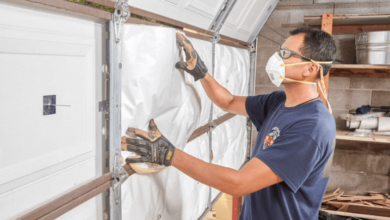Innovative Plumbing Technologies and Trends

The plumbing industry has significantly advanced recently, introducing technologies and trends that enhance efficiency, sustainability, and convenience. These innovations by All-Star Plumbing transform how plumbing systems are designed, installed, and maintained, providing homeowners and businesses with improved performance and cost savings. We will explore the latest plumbing technologies and trends, focusing on smart plumbing systems, water conservation solutions, and advanced materials. By understanding these developments, individuals can make informed decisions to upgrade their plumbing systems and benefit from the latest innovations.
Smart Plumbing Systems
Internet of Things (IoT) in Plumbing
The Internet of Things (IoT) has revolutionized the plumbing industry by introducing smart plumbing systems that offer enhanced control and monitoring capabilities. IoT-enabled devices, such as smart water meters, leak detectors, and automated shut-off valves, provide homeowners and property managers with real-time data and alerts. These devices can be monitored and controlled remotely through smartphone apps, allowing for quick response to potential issues.
Smart plumbing systems help prevent water damage by detecting leaks and automatically shutting off the water supply. They also provide valuable insights into water usage patterns, enabling users to identify inefficiencies and reduce water consumption. Homeowners and businesses can enhance their water management practices by integrating IoT technology into plumbing systems and avoid costly repairs.
Read also: Essential Steps to Ready Your Home for a Roof Replacement
Smart Faucets and Showers
Smart faucets and showers are gaining popularity for their convenience and water-saving features. These fixtures can be controlled through voice commands or smartphone apps, allowing users to easily adjust water temperature, flow rate, and duration. Some smart showers even offer personalized settings for multiple users, ensuring optimal comfort and efficiency.
In addition to convenience, smart faucets and showers contribute to water conservation by incorporating features such as motion sensors and automatic shut-off mechanisms. These technologies help reduce water waste by ensuring water is only used when needed. As a result, smart plumbing fixtures are becoming an integral part of modern, eco-friendly homes.
Water Conservation Solutions
Low-Flow Fixtures
One of the most effective ways to conserve water is using low-flow fixtures. These fixtures, including toilets, faucets, and showerheads, are designed to use significantly less water without compromising performance. Low-flow toilets, for example, use only 1.28 gallons per flush compared to the traditional 3.5 gallons, resulting in substantial water savings.
Low-flow faucets and showerheads conserve water by incorporating aerators that mix air with water, reducing the flow rate while maintaining pressure. By replacing traditional fixtures with low-flow alternatives, homeowners can reduce their water consumption and utility bills. Additionally, these fixtures are often more efficient and reliable, making them a practical choice for modern plumbing systems.
Greywater Recycling Systems
Greywater recycling systems are an innovative solution for reducing water waste. These systems reuse water from sinks, showers, and laundry for non-potable purposes such as irrigation and toilet flushing. These systems collect, filter, and treat greywater, making it safe for reuse. Homeowners can significantly reduce their freshwater consumption by implementing greywater recycling and contributing to water conservation efforts.
Greywater recycling systems are particularly beneficial in areas prone to drought or with limited water resources. They provide an eco-friendly way to manage water usage and reduce the strain on municipal water supplies. As awareness of water scarcity issues grows, greywater recycling systems are becoming an increasingly popular choice for sustainable plumbing.
Advanced Materials and Techniques
Cross-Linked Polyethylene (PEX) Pipes
Cross-linked polyethylene (PEX) pipes have become a preferred choice in modern plumbing due to their flexibility, durability, and ease of installation. Unlike traditional copper or PVC pipes, PEX pipes can bend around corners and obstacles without fittings, reducing the risk of leaks and simplifying the installation process. PEX pipes also resist corrosion and scaling, ensuring a longer lifespan and fewer maintenance issues.
PEX piping systems can handle hot and cold water, making them versatile and suitable for various plumbing applications. Their flexibility allows quick and efficient installation, saving time and labor costs. As a result, PEX pipes are increasingly being used in residential and commercial plumbing projects.
Trenchless Technology
Trenchless technology is a groundbreaking innovation that allows for repairing or replacing underground pipes without requiring extensive excavation. This method involves minimal digging, using advanced equipment to create small access points, and installing new pipes or repairing existing ones. Trenchless technology is less disruptive and more cost effective than traditional methods, making it an attractive option for plumbing projects.
One common trenchless technique is pipe bursting, where a new pipe is pulled through the old, damaged pipe, breaking it apart and replacing it simultaneously. Another method is cured-in-place pipe (CIPP) lining, where a resin-coated liner is inserted into the existing pipe and cured to form a new, durable inner layer. These techniques reduce the environmental impact and inconvenience associated with traditional pipe replacement, making them a preferred choice for modern plumbing solutions.
Plumbing Innovations for Health and Safety
Touchless Fixtures
Touchless plumbing fixtures like faucets and toilets have become increasingly popular due to their health and safety benefits. These fixtures use motion sensors to detect the presence of hands or objects, allowing for hands-free operation. Touchless faucets reduce the spread of germs and bacteria by eliminating the need to touch handles, while touchless toilets provide a more hygienic flushing experience.
In addition to promoting hygiene, touchless fixtures contribute to water conservation by ensuring that water is only used when needed. Many touchless faucets feature automatic shut-off mechanisms that prevent water from running unnecessarily. As concerns about hygiene and sustainability continue to grow, touchless plumbing fixtures are becoming a standard feature in residential and commercial settings.
Water Filtration Systems
Advanced water filtration systems are essential for ensuring clean and safe drinking water. These systems use various filtration methods, such as activated carbon, reverse osmosis, and UV purification, to remove contaminants and impurities from the water supply. Modern water filtration systems can be installed at entry, treating all the water in the home or at the point of use, such as under the sink or at the faucet.
Water filtration systems improve drinking water’s taste and quality, reducing harmful substances such as chlorine, lead, and bacteria. These systems promote health and well-being for homeowners and their families by providing access to clean water. As water quality concerns persist, advanced filtration systems are becoming integral to modern plumbing solutions.
Conclusion
Innovative plumbing technologies and trends are transforming the industry, offering solutions that enhance efficiency, sustainability, and convenience. Smart plumbing systems, water conservation solutions, advanced materials, and health and safety innovations exemplify how the plumbing industry is evolving. By staying informed about these developments, homeowners and businesses can upgrade their plumbing systems to benefit from improved performance and cost savings. Embracing these innovative technologies enhances plumbing systems’ functionality and contributes to a more sustainable and resilient future.




